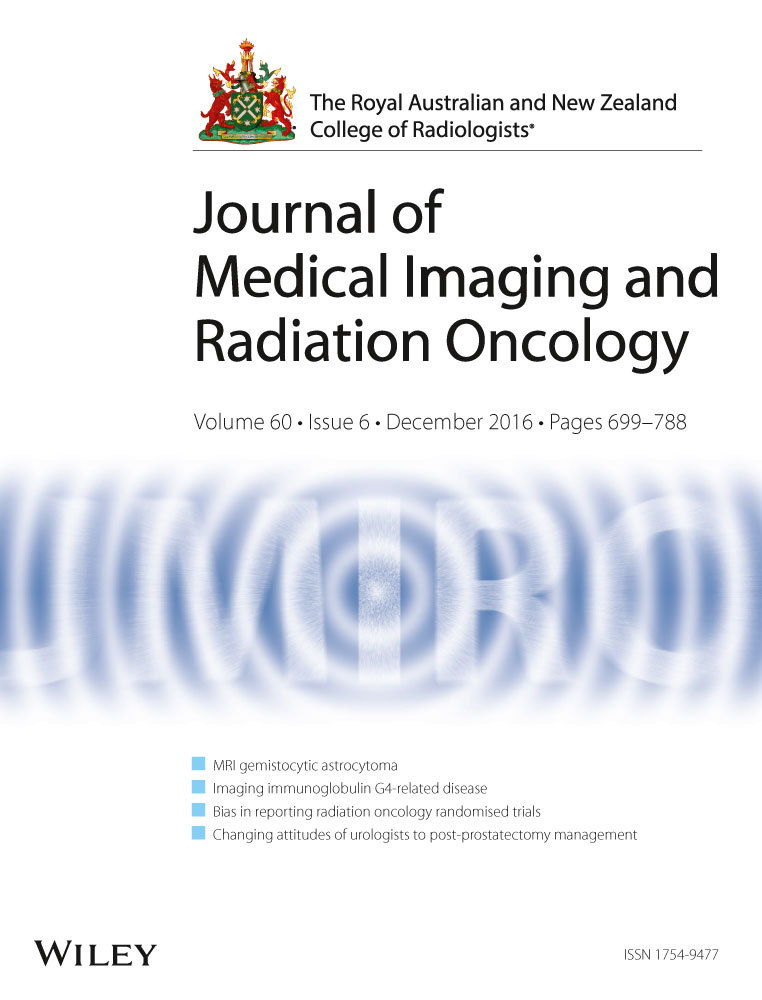Audit of CT reporting standards in cases of intracerebral haemorrhage at a comprehensive stroke centre in Australia
Abstract
Introduction
Multiple CT-derived biomarkers that are predictive of intracerebral haemorrhage (ICH) growth and outcome have been described in the literature, but the extent to which these appear in imaging reports of ICH is unknown. The aim of this retrospective process audit was to determine which of the known predictors of ICH outcome was recorded in reports of the disease, with a view to providing reporting recommendations, as appropriate.
Method
We examined the initial CT report of patients diagnosed with ICH presenting to a metropolitan comprehensive stroke centre and meeting inclusion criteria during the audit period between 1 March 2013 and 28 February 2014. Each report was assessed for the inclusion of the following ICH characteristics: the number of measurement dimensions; volume; location; hydrocephalus; shape; density; ‘CTA spot sign’ (where CTA was performed).
Results
A total of 100 patients met audit inclusion criteria. At least one ICH dimension was recorded in 90% of reports; however, 39% did not include the measurements in three dimensions and volume was reported in just 6%. No ICH dimension was recorded in 10% of reports. With the exception of density and shape, reporting of other CT features exceeded 95%. Where CTA was performed (58%), 14 (24%) of 58 reported the ‘CTA spot sign’ status.
Conclusion
In this audit, volume was the most under-reported of the established ICH characteristics predictive of ICH outcome. Readily calculated from multiplanar reformats using the ABC/2 technique, the routine reporting of ICH volume is recommended. More reporting attention to ICH density heterogeneity and shape irregularity is encouraged, given their emerging importance. Where acute CTA is performed, the presence of any dynamic haemorrhage (CTA spot sign) should be reported.




